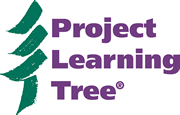Overview
By adding more carbon to the atmosphere, humans are altering where carbon can be found as it cycles through biological, physical, and geological systems. This section includes two activities to help students understand this cycle; how humans are impacting it; and the role that different land uses, particularly forests, can play in sequestering carbon. Students explore carbon pools and fluxes (Activity 7) and calculate the amount of carbon stored in a tree and sequestered by different land uses (Activity 8) through simulation, group discussions, and hands-on outdoor exercises.
Key Concepts in Section 3
- Carbon naturally cycles through biological, physical, and geological systems.
- Humans are altering the natural carbon cycle by adding more carbon to the atmosphere, primarily through fossil fuel combustion.
- Increased levels of atmospheric carbon dioxide will impact others systems, including oceans and forests.
- Trees absorb carbon dioxide from the atmosphere during the process of photosynthesis. About half of this carbon is stored or “sequestered” in the tree’s growing roots, trunk, branches, and leaves.
- Pine forests are a particularly effective landscape for sequestering carbon because of the trees’ fast growth rates.
- There is not enough land available on Earth for forests to sequester all the carbon dioxide that we emit through industry, transportation, and other activities. To reduce atmospheric carbon, we might consider solutions such as reducing consumption and using low-carbon energy sources.
download the Section 3 Overview.

